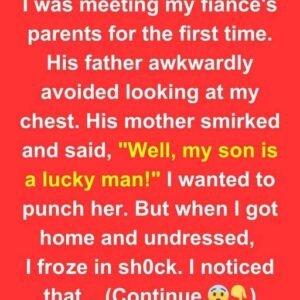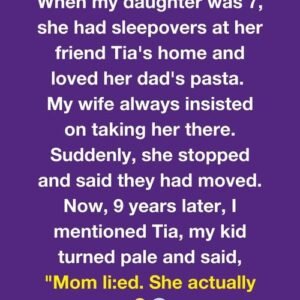In the fast-paced world of quick-service restaurants, where menu items come and go with seasonal regularity, one particular absence has haunted McDonald’s customers for nearly a decade. The void left behind became the subject of petitions, social media campaigns, and countless drive-thru conversations that left both customers and employees yearning for what once was. Now, after years of relentless customer advocacy and behind-the-scenes corporate maneuvering, the golden arches are preparing to deliver what may be the most anticipated menu comeback in fast food history.
The Announcement That Broke the Internet
On June 3, 2025, McDonald’s officially confirmed that the beloved Snack Wrap will return to U.S. restaurants on July 10, ending a nine-year absence that had become the stuff of fast-food legend. The announcement came through multiple channels, but perhaps most memorably through an emotional social media post that acknowledged the unprecedented role customers played in bringing their favorite menu item back from the dead.
The McDonald’s social media team crafted what would become one of the most shared and discussed corporate announcements of the year, with the person behind the account breaking the fourth wall to speak directly to the fans who had never given up hope. “I don’t usually do this, and I didn’t run this by Brian from legal (sorry, Brian). But I have something to say,” the post began, immediately signaling that this wasn’t going to be a typical corporate announcement.
What followed was a heartfelt tribute to customer persistence that read more like a love letter than a marketing message. The company posted a more than 350-word X post, allegedly penned by a social media manager who “made 486 decks on ‘reasons why to bring back the Snack Wrap’”, highlighting the extraordinary efforts made both by fans and internal advocates to resurrect the discontinued item.
The Power of Persistent Customer Advocacy
The return of the Snack Wrap represents one of the most successful examples of grassroots customer advocacy in modern corporate history. A Change.org petition started in 2021 in its honor garnered over 17,000 signatures, and fans resorted to posting TikToks and making dedicated Instagram accounts devoted to bringing it back.
The campaign wasn’t just limited to online activism. Nine years after the fast-food powerhouse discontinued the item in the U.S., customers have continued to order it at drive-thrus, creating awkward but persistent interactions between hopeful customers and employees who couldn’t fulfill their requests.
The dedication of Snack Wrap advocates went far beyond casual interest. In one email, entitled “Snack Wraps for this Pregnant Lady,” a McDonald’s customer named Carli writes “my biggest craving is something I can’t have. I am due July 14th, 2025. Will snack wraps be back before then? Please just give me a hint.” Another devoted fan simply signed their plea as “loyal snack wrap lover,” writing, “I’ve waited years and I’m getting mildly impatient”.
The emotional investment customers had in the Snack Wrap’s return was evident in every petition signature and social media post. One petitioner captured the sentiment perfectly: “To my beloved McDonald’s Snack Wrap… you were the ideal snack, the perfect meal on the go, the comfort food I didn’t know I needed until you were gone. McDonald’s, why did you take away such perfection?”
The Corporate Recognition of a Movement
McDonald’s leadership had been aware of the Snack Wrap’s devoted following for years. On Dec. 5, Joe Erlinger, president of McDonald’s USA, first revealed that the Snack Wrap was on its way back while discussing the new McValue menu. “The Snack Wrap will be back in 2025,” Erlinger said at the time, declining to reveal the exact date. “It has a cult following, I get so many emails into my inbox about this product”.
The company’s acknowledgment of customer demand wasn’t just lip service. Internal advocates within McDonald’s had been building the case for the Snack Wrap’s return for years, compiling evidence of customer interest and working to solve the operational challenges that had led to its original discontinuation.
The social media manager’s confession of creating “286 decks on ‘reasons why to bring back the Snack Wrap’” (which was later reported as 486 in some sources) illustrates the extraordinary internal effort required to convince corporate decision-makers that the return was not only wanted by customers but also operationally and financially viable.
The Original Rise and Fall of the Snack Wrap
To understand the significance of the Snack Wrap’s return, one must appreciate its original impact on McDonald’s menu and the fast-food industry as a whole. McDonald’s invented the Snack Wrap — a tortilla full of chicken, lettuce, shredded cheese and sauce — almost two decades ago to make it easier to eat its chicken on the go. The item first appeared on menus in 2006, representing McDonald’s attempt to capture health-conscious consumers and those seeking more portable meal options.
The Snack Wrap was revolutionary for McDonald’s, offering a lighter alternative to traditional burgers while maintaining the convenience and taste that customers expected. It appealed to multiple demographics: health-conscious diners who saw it as a better option than fried foods, busy professionals who needed portable meals, and younger consumers who were drawn to its fresh, modern presentation.
The wraps’ smaller size and tortilla casing also appeal to the health-conscious. Steve Davis, a mental health counselor in Fort Lauderdale, Florida, used to buy six grilled chicken Snack Wraps at a time and keep them in his fridge as a grab-and-go snack. “I’m not actually a fast-food fan, but Snack Wraps felt different, like I was eating an actual ‘wrap.’ I felt like I was being healthier,” Davis said.
However, McDonald’s introduced snack wraps nearly two decades ago but discontinued the item in 2016 because it slowed its kitchens down too much. Some franchisees kept snack wraps around until 2020, when McDonald’s slashed its menu during the Covid-19 pandemic lockdowns to keep service running as smoothly as possible.
The operational complexity that killed the original Snack Wrap was significant. The fast food giant removed Snack Wraps from its lineup in 2016 after franchisees reportedly complained they were too complicated to make. The assembly process required multiple steps and ingredients that disrupted the streamlined workflow McDonald’s had perfected for its core menu items.
The Competitive Landscape During the Absence
During the Snack Wrap’s nine-year hiatus, competitors didn’t ignore the market opportunity its absence created. The opening in the snack wrap market allowed competition to jump in, such as Wendy’s grilled chicken ranch wrap in 2023. Popeyes Louisiana Kitchen introduced its own chicken wraps on Monday, while Burger King and Wendy’s have sold them since 2023. Even the convenience store chain Wawa sells a chicken wrap.
The timing of McDonald’s announcement was particularly notable given that the news comes just a day after Popeyes announced it’s adding Chicken Wraps to its menu this summer. This competitive pressure likely influenced McDonald’s decision to accelerate their timeline, as evidenced by their social media post stating, “Also I got my boss to bring it back earlier for you. snack wrap is available 07.10”.
The New and Improved Version
The returning Snack Wrap won’t be identical to its predecessor, reflecting lessons learned from both its original discontinuation and nearly a decade of menu evolution. This time, McDonald’s snack wraps will be made with one of the chain’s McCrispy Strips, which launched nationwide in May. The wraps will come in two flavors: spicy and ranch.
The Snack Wrap, which has been off menus for nearly a decade, features one of the chain’s new McCrispy Strips — a chicken strip made with all-white meat — topped with shredded lettuce and shredded cheese, wrapped in a flour tortilla.
The flavor options represent both continuity and innovation. The Spicy option delivers the same habanero kick that fans enjoy in the Spicy McCrispy sandwich, whereas the Ranch wrap is rich and savory, with hints of garlic and onion. This is a departure from the original version, which included a choice of grilled or fried chicken and sauce options like honey mustard and sweet chili. The simplified recipe is to ensure faster service, according to the company.
Strategic Business Implications
The Snack Wrap’s return comes at a crucial time for McDonald’s, which has been struggling with declining sales in recent quarters. The revival of the beloved menu item comes after McDonald’s saw same-store sales decline in the first quarter. More specifically, the burger chain reported that its U.S. same-store sales declined 3.6% in the first quarter.
In May, the restaurant chain reported a sales decline for the second straight quarter – its worst loss since Covid – as customers pulled back spending on purchases like eating out as they feel shaky about the economy. In this context, the Snack Wrap represents both a response to customer demand and a strategic move to reinvigorate sales through nostalgia and novelty.
The broader strategic importance goes beyond immediate sales impact. The menu item is part of McDonald’s broader push beyond beef into chicken. The success of restaurants such as Chick-fil-A, Popeyes, Raising Cane’s and Dave’s Hot Chicken has made chicken a fast-growing restaurant category in recent years. The return of McDonald’s snack wraps could ignite the next stage in the so-called chicken wars.
CEO Chris Kempczinski acknowledged this strategic importance, stating: “The market continues to show the consumer is interested in this product. We want to make sure that we’re meeting our customers’ needs on that”.
The Marketing Campaign and Customer Engagement
McDonald’s approach to announcing the Snack Wrap’s return was as unprecedented as the customer campaign that brought it back. The company created multiple touchpoints for fan engagement, including the development of a dedicated website called “The Snack Wrap Files.”
McDonald’s also posted on the Snack Wrap’s on its X account, thanking ardent fans for resurrecting the long-lost menu item. Breaking the fourth wall, the social media manager behind the McDonald’s account addressed followers directly, reminding them that “social media managers don’t control the menu,” but rather its the fans who are to thank for the Snack Wrap’s revival. Stated the post, “you created a movement. a movement so powerful that you finally won”.
Along with the announcement, McDonald’s released the Snack Wrap Files. The website, which has a countdown in the top-right corner of the screen that’s suspiciously counting down to June 9, is a collection of locked folders labeled presumably by each’s contents.
This multi-layered marketing approach acknowledges the unique nature of the Snack Wrap’s return while building additional anticipation for its arrival. The campaign treats returning customers not just as consumers, but as co-conspirators in a successful advocacy campaign.
The Operational Challenges and Solutions
The original discontinuation of the Snack Wrap was primarily due to operational complexity, so McDonald’s had to solve these problems before considering a return. Bringing back the wrap was a “years-long process,” Erlinger told The Associated Press, indicating the substantial work required to make the item viable for modern McDonald’s operations.
The solution came through both menu simplification and operational innovation. By using the McCrispy Strips that were already being prepared for other menu items, McDonald’s reduced the complexity of the assembly process. The simplified sauce options (down to just spicy and ranch) further streamlined preparation while maintaining the core appeal of the original item.
The years-long development process also allowed McDonald’s to test and refine the preparation process in ways that wouldn’t have been possible during the original Snack Wrap era. Modern kitchen equipment, updated training protocols, and improved supply chain management all contributed to making the previously problematic item operationally feasible.
Consumer Behavior and Changing Dining Patterns
The Snack Wrap’s return also reflects broader changes in American dining patterns that have accelerated since its original discontinuation. More people are choosing to eat smaller meals throughout the day instead of having breakfast, lunch and dinner at their traditional times. “The consumer doesn’t think about things in the neat buckets that we as marketers like to think about them,” Portalatin said. “We like to say, ‘This occasion is lunch and these are lunch foods.’ The consumer simply says, ‘I’m hungry. What time is it? Where am I?’”
This shift toward “snackification” of meals makes the Snack Wrap particularly well-positioned for success in 2025. The item appeals to consumers seeking portion control, portability, and the ability to eat satisfying food outside traditional meal times.
The health consciousness that originally drove some of the Snack Wrap’s appeal has also evolved and intensified since 2016. While consumers aren’t necessarily seeking “health food” from McDonald’s, they are increasingly interested in options that feel lighter, fresher, and more balanced than traditional fast-food offerings.
The Economic Context of the Return
The Snack Wrap’s comeback occurs against the backdrop of significant economic challenges affecting both consumers and restaurants. Rising inflation, supply chain disruptions, and changing consumer spending patterns have forced fast-food chains to reconsider their value propositions and menu strategies.
For McDonald’s, the Snack Wrap represents a potential solution to multiple challenges. It offers perceived value through its substantial size and protein content, appeals to cost-conscious consumers seeking alternatives to higher-priced menu items, and provides a differentiated offering that competitors haven’t successfully replicated.
The pricing strategy for the returning Snack Wrap will be crucial to its success. The company has not revealed how much the Snack Wrap will cost, only that prices will vary depending on location. However, McDonald’s plans to sell the snack wrap by itself and as a combo consisting of two snack wraps, medium fries and a drink, suggesting multiple price points to appeal to different consumer segments.
The Role of Social Media in Corporate Decision-Making
The Snack Wrap saga represents a case study in how social media has transformed the relationship between corporations and consumers. Traditional market research and focus groups might not have captured the depth of passion that Snack Wrap fans maintained over nine years of absence.
The persistent social media campaigns, viral TikTok videos, and dedicated Instagram accounts created a form of continuous market research that was impossible to ignore. McDonald’s social media team became intermediaries between passionate customers and corporate decision-makers, translating online enthusiasm into business justification.
The company’s decision to acknowledge this dynamic explicitly in their announcement was both authentic and strategic. By crediting customers with the return, McDonald’s positioned itself as a responsive, customer-focused organization while building goodwill for future menu decisions.
Personal Stories and Emotional Connections
Beyond the business implications, the Snack Wrap’s return represents the restoration of personal connections and memories for countless customers. The decision devastated fans like Alicia Force, a musician and administrative assistant at a high school in Missouri. Force tried to make Snack Wraps at home and sampled alternatives from Arby’s and other restaurants, but nothing was the same. So she started a Facebook group with 86 members urging McDonald’s to resurrect the Snack Wrap.
These personal stories illustrate the emotional dimension of food preferences and brand loyalty. Force said she has fond memories of picking up a Snack Wrap after school as a teenager. She’s looking forward to making that part of her routine once more. “Hopefully, they come back and they taste the same, and they don’t break my heart again, quite frankly,” she said.
The phrase “don’t break my heart again” captures the vulnerability that customers feel when forming attachments to discontinued products. It also highlights the pressure McDonald’s faces to deliver a product that meets the elevated expectations created by nine years of absence and anticipation.
Looking Forward: Launch Day and Beyond
As July 10 approaches, McDonald’s faces the unique challenge of managing expectations for one of the most anticipated menu launches in fast-food history. The company has committed to making the Snack Wrap a permanent menu addition rather than a limited-time offer, signaling confidence in its long-term viability.
The launch will serve as a test case for several important business principles: the power of customer advocacy in corporate decision-making, the viability of bringing back discontinued products, and the ability of nostalgia-driven marketing to drive sustained sales rather than just initial curiosity.
Success will be measured not just in immediate sales figures, but in customer satisfaction, operational efficiency, and the item’s ability to attract new customers while retaining existing ones. The simplified preparation process and updated ingredients represent McDonald’s attempt to learn from past mistakes while preserving the qualities that made the original Snack Wrap beloved.
The Broader Implications for the Fast-Food Industry
The Snack Wrap’s return may influence how other fast-food chains think about discontinued menu items and customer feedback. The success of sustained customer advocacy in bringing back a removed product could encourage similar campaigns for other beloved discontinued items across the industry.
Other chains are likely watching McDonald’s Snack Wrap launch closely, both for insights into consumer demand for wrap-style products and for lessons about the power of customer advocacy. The competitive response from companies like Popeyes, Wendy’s, and Burger King suggests that the wrap category may become a new battleground in the ongoing chicken wars.
The success or failure of McDonald’s Snack Wrap return could also influence future menu development strategies across the industry. Companies may become more hesitant to discontinue items with passionate followings, or more strategic about how they manage menu transitions to avoid creating similar advocacy campaigns.
Conclusion: A Victory for Customer Voice
The return of McDonald’s Snack Wrap represents more than just the restoration of a menu item—it’s a victory for customer voice in an era when consumers often feel disconnected from the corporations that serve them. The nine-year campaign that brought back the Snack Wrap demonstrates the power of persistent, organized customer advocacy and the potential for social media to bridge the gap between consumer desires and corporate decision-making.
For McDonald’s, the Snack Wrap’s return represents an opportunity to rebuild trust with customers who felt abandoned by its original discontinuation while attracting new consumers to a proven product category. The company’s acknowledgment of customer agency in the return process creates a template for future customer engagement that goes beyond traditional marketing to include genuine responsiveness to consumer preferences.
The story also illustrates the evolution of the fast-food industry, where success increasingly depends on balancing operational efficiency with customer satisfaction, and where social media has created new pathways for consumer influence. The Snack Wrap’s return proves that in the age of viral campaigns and persistent digital advocacy, no menu decision is permanent, and customer passion can ultimately triumph over corporate convenience.
As July 10 approaches and millions of customers prepare to taste their first Snack Wrap in nearly a decade, the success of this comeback will be measured not just in sales figures, but in the validation of a new model for customer-corporate relationships. The Snack Wrap’s return is ultimately a story about the power of community, persistence, and the simple truth that when enough people want something badly enough, even the largest corporations must eventually listen.
The golden arches are about to welcome back one of their most missed menu items, carried on the shoulders of customers who refused to let their favorite wrap disappear forever. It’s a reminder that in the fast-food industry, as in democracy, the voice of the people—when sustained, organized, and passionate—can ultimately prevail.





